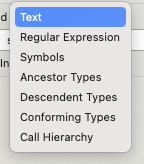There are plenty of instances that are open, but it depends on your definition of “censored” if they are what you seek.
Completely “uncensored” instances are rare if not non-existent because most instances will at least try to adhere to the laws of their jurisdiction and in addition will have some rules in place to keep things running smoothly and pleasant for everyone.
Most big instances are run from the EU so they’ll often have rules regarding hate speech.
Depending on your definition your only options might either be Japanese instances due to less strict laws around certain content or right wing instances, but both will be almost uniformly blocked on other instances.








USPS’ website does this, sort of.
If their text service is down it’ll let you know and just skip the 2FA process even though normally they offer an option to get the code via email.
The fact that they do this is bad enough, the fact that this happens so often that I’ve seen this at least a dozen times is even worse.